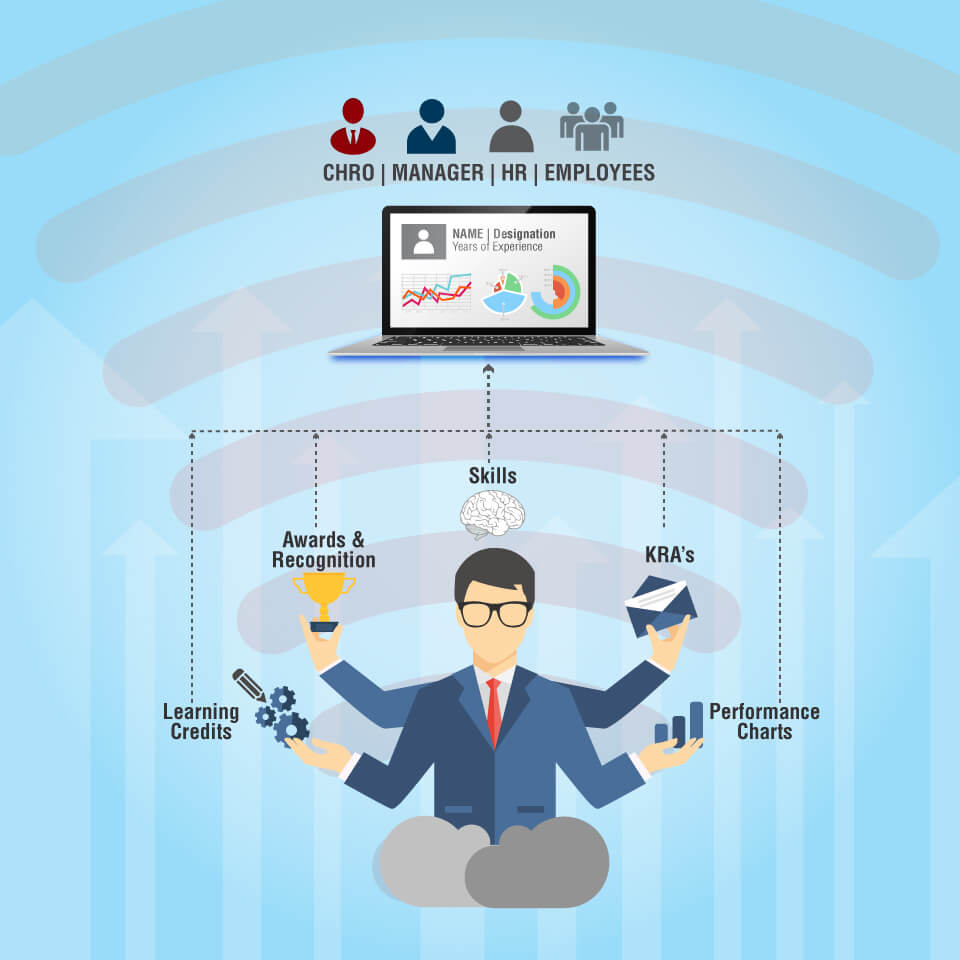If we call the late 20th century as the information age, 21st century could well belong to Analytics. Leave alone the BIG Data that is lying across various social platforms, there is a real BIG data sitting inside the organizations.
The impact Analytics brings to the table in various walks of life in an organization is both exciting as well as raises questions.
Organizations are maturing, albeit slowly, and are moving in the Analytics value chain. The impact Analytics will have or rather “can have” is probably not understood in its entirety. To a large extent Analytics is still “post-mortem”, a tool that brings out the raw data, reports, metrics, patterns and linkages.
However, Analytics is evolving as much more than this. The use cases are enormous and have implications that push the boundaries.
Application of HR Analytics and its findings are helping employers to question the processes,reinvent them and with technology interventions, is providing new ways of achieving the aims of various processes. Decades old processes are being challenged and new thoughts and perspectives are emerging. If we look at organizations making strides faster and climbing new highs, we can see a pattern emerging: They are redefining work, redefining the role of employees and managers and they are redefining the interactions.
And in this process, the entire Analytics, as we know it will undergo a similar tectonic change.
For Employees and Employers, it is a “Galileo moment” – The employee is the centre of the universe and the systems/applications revolve around the employee.
As a result of this, the traditional way of Analytics looking at it from the data available in various systems in an organization will change. Analytics will start from the source. The Employee.
Rise of Employee Analytics

Employees are increasingly looked at as “Customers”. Similar to “Customer Experience”, organizations are focusing on “Employee Experiences”. This just does not stop at providingconsumer grade applications to employees, but looking at employees in a completely different light, as enablers of business success.
Just as how customers generate data, when they demand a particular service, particular product and express their preference through a LIKE or DISLIKE, a formal feedback or switching over to a competitor, employees also generate data, in the way they interact within and outside the organization.
As a result of this, the future of HR Analytics is not going to be post-mortem tool but an “all pervasive engine” that collects, analyses data and patterns, predicts outcomes and helps employees to achieve what is expected of them. Not from a perspective of providing analytics to the Employer but to start from the employee.
Of course, when rolled up at the organization level, this will form the basis of the organizational analytics. However, the focus shifts from trying to look at it “top-down” to become “bottoms-up”.
This is more of an Employee Analytics – Not HR Analytics which helps only the HR or organizational leadership.
The focus will be towards enabling the employees, whether in achieving their goals – be it performance or wellness goals or social engagement goals or learning goals, or in helping them realize their strengths and weaknesses.
And unlike the “old HR Analytics”, the “Employee Analytics” will be looking at an Employee not purely from an organizational data perspective, but the organization itself as a part of a “Network of Connected Employees”.
The Employee Analytics will not only collect data and analyse it but will be focused towards guiding the future, helping the employees in their day-to-day work, providing a faster feedback loop on their actions and reactions, recommending course corrections and helping them improve.
Let’s look at some of the use cases to illustrate the point further.
PERFORMANCE APPRAISAL

Performance Appraisal has got to be probably one of the most hated processes in HR. Not a day passes when headlines proclaim how performance appraisal systems and processes at leading global companies are being changed. There is a generation shift in these processes and technology is aiding these with modern applications.
The Performance Appraisals of the future will not be one driven by voluminous, time consuming data entry for the employees and managers. The Performance Appraisal of the future will be about capturing and celebrating dynamic goal achievement rather than that of compliance. In fact, it will no more be “Performance Appraisal” but will be “My Achievement”.The future performance appraisal system will be a dashboard of inputs coming from other associated systems that provides a reality check to both employees and managers.
The Performance Appraisals of the future will be one where the focus is on achieving what “one sets out to achieve” than a “system of assessment, ranking and compliance”.They are going to be about helping employees have a reality check and raising the bar higher.
The future Employee Analytics portends 3 distinct points of interest on which the feedback or impact will be collected and presented in a gamified fashion:
- Self
- Network
- Eco System
Self:
This dimension is all about fulfillment of the pre-defined set of KPIs / Metrics for a job or role. The data will not be entered by the employee or manager, but however be brought from the other systems in Sales, CRM, Procurement, Production, R & D, Operations, Project Delivery, which may have the data of individual employees as well as rolled up at team and unit levels etc, which is essentially theNETWORK.
TheEmployee Analytics engine will crunch the numbers from these various systems based on the role and identity of the SELF, and provide the dashboard of quantified achievements. This will be real time to facilitate a periodic reality check by the employee or the manager. This will roll up across the organization at various levels, to help an aggregated view of the Business Unit or Organizational, to help various roles like Manager or Unit Head or CHRO.
Network:
This functionality will provide details around the immediate surroundings on which the SELF has an impact – Managers, team members, customers, suppliers etc. The performance feedback is no more a structured 360° appraisal, but a snapshot of interactions, an immediate feedback loop which will funnel both the positives and negatives of the interactions. This may not even be a feedback taken formally but culled from various data sources like e-mails, enterprise social collaboration tools etc. It could be a simple LIKE / DISLIKE in an internal social interaction app used by an organization.
This engine constantly collects the interactions behind the scenes and is BIG DATA within the organization. The engine makes sense of the data and provides a summary view of the data to enable the employee to assess the situation and progress.
Eco System:
This feature of the engine is about data captured in the employees’ eco system – the contributions of the SELF captured tothese eco systems and the positivity or the negativity of those contributions, will all be collected, analysed and assigned a score.
The combined dashboard will be used mainly for the purposes of providing a reality check for an employee – enabling the employee assess whether he/she has achieved what he/she set out to achieve. It will not be a ranking or rating but simply a score to be looked within the context of SELF.
LEARNING

As we all are well aware, Learning & Development is no more the exclusive domain where the organization plays a central role. Though organizations do play a role, the ownership and onus of continuous upskilling has shifted to the employee. Learning technology today presents a unique opportunity, where employees have the choice of content, choice of delivery, choice of time in their hands.
Employee Analytics is going to focus on internal and external Learning by employees, analyse their behavior patterns coming from their interactions in their network, recommend courses based on their career choices and their own learning history.
Not based on what organizations are expecting the employee to learn or based on organization’s requirement of learning hours or based on organization’s catalogue of learning courses.
Analytics, thus is going to see a marked shift towards focusing on the individual employee rather than focusing on overall organization. The “drill down” will become “roll-up”.
This is an enormous shift from focusing on organizational metrics, trying to identify compliance, and to satisfy that, trying to collect and cleanse the data.
It instead focuses on the individual employee, who is fast becoming a Digital Employee and focuses on following the interaction which is the one that essentially generates the data.



















